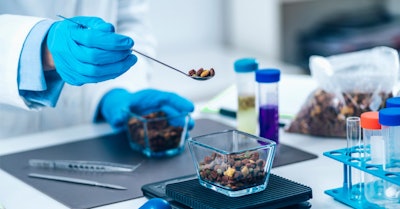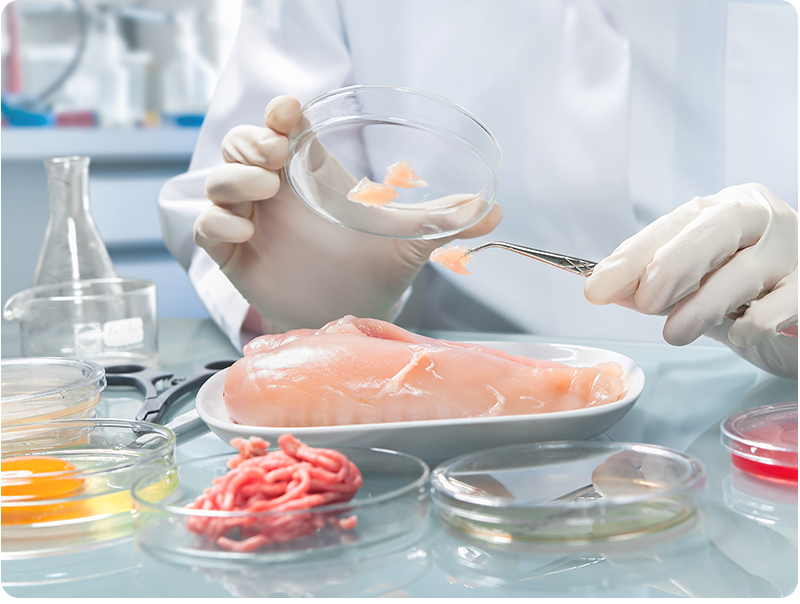
Whether your prospective pet food supplier has a squeaky-clean reputation or has experienced the dreaded recall, it is critical to ensure that they are committed to the same pet food safety and standards that you are.
Brand Insights from Alphia.
Choosing a pet food manufacturing partner is a complicated process, evaluating a company’s reputation in the market is a great way to get started but why stop there? It’s important to pull back the curtain to see what’s going on behind the scenes, this will give you a better idea of how a company accounts for the quality and safety of its product.
Most pet food manufacturers with a strong reputation will have a food and safety program in place. However, how thorough is it? How is it implemented? Without answering these key questions, you may be at risk of manufacturing a product that does not meet your standards, your customer’s standards, or requirements of the FDA.
To avoid taking these risks, here are 3 critical questions to ask any potential pet food manufacturer:
- How Is Your Food Safety Program Structured?
Most food safety programs aim to eliminate, prevent or significantly reduce food safety hazards to an acceptable level. To achieve this goal, the food safety management system (e.g. HACCP) must be based on effective prerequisite food safety programs, which should contain the following:
- Supply Chain Management Program – The integrity of the final product is guaranteed by establishing specifications for all ingredients. The manufacturer should only make purchases from approved suppliers and establish a schedule of necessary supplier verification activities, for example, on-site audits.
- Sanitary Transportation of Food – Food safety of the finished products should be guaranteed by requiring the shipper, or any other transportation group handling the product, to follow established sanitary practices.
- cGMP’s (Current Goods Manufacturing Practices) – Any reputable pet food partner should already be utilizing cGMP’s, which includes the use of hair nets to prevent product contamination, adequate water supply and continuous plant sanitation.
- SOP’s (Standard Operating Procedures) – Having SOP’s in place will ensure consistent execution of critical tasks.
- SSOP (Sanitation Standard Operating Procedure) – Step-by-step procedures for sanitizing and cleaning equipment to minimize contamination.
- Regular Audits – Third-party or internal audits should be conducted at the production facility, reports from a certified firm should be available upon request.
- Committed Culture – Manufacturers should be committed to creating policies and providing training for employees related to food safety, ensuring that it is one of their core principles.
 What Measures Do You Take To Prevent Cross-Contamination?
What Measures Do You Take To Prevent Cross-Contamination?
Cross-contamination is an often-overlooked segment of food safety, making this a vital question to propose to any potential partner. Every manufacturing process should already include a “kill” step in place, with the goal of killing pathogens that may exist in the ingredients. However, without the proper precautions in place, harmful microorganisms could still be transferred from contaminated surfaces to food surfaces, or from raw ingredients to the final product. An effective prevention measure that you want to look for is Hygienic Zoning. This is when a facility is split into separate zones in order to separate raw ingredient handling areas from post-kill areas, such as break rooms, hallways, warehouses and maintenance areas. Both movement and airflow should be controlled to prevent cross-contamination between zones.
- Have Any Of Your Products Been Recalled? If Yes, What Steps Have You Taken To Make Sure It Never Happens Again?
It is vital to confirm that your potential manufacturer has a history of complying with both customer and regulatory requirements. If the manufacturer has experienced a recall, before scratching them off your list, ask them what happened and what have they done to alleviate the problem and ensure that it will not happen again?
A recall can be evidence that a food safety program has failed; however, there are many reasons for a recall to happen. For example, it may be as simple as an employee error that leads to a recall. Or an ingredient from a supplier, with a provided assurance letter, that later was found to be contaminated. Whatever the reason for the recall, asking intelligent questions can help the real causes of the recall come to light and help you determine whether the manufacturer’s food safety programs are up to your standard.
Conclusion
Manufacturing pet food is a complicated process. To prevent contamination and to maintain product integrity, appropriate measures must be taken every step of the way, from raw ingredient sourcing to production and transportation. Failure to uphold food safety standards could lead to interruptions in your production schedule, or in a worst-case scenario, lead to an FDA recall.
Before settling on a pet food manufacturer to partner with, make sure they are adequately vetted by asking smart, informed questions and performing your own audit. Your reputation and your customers, two-legged and four-legged, are depending on it.
